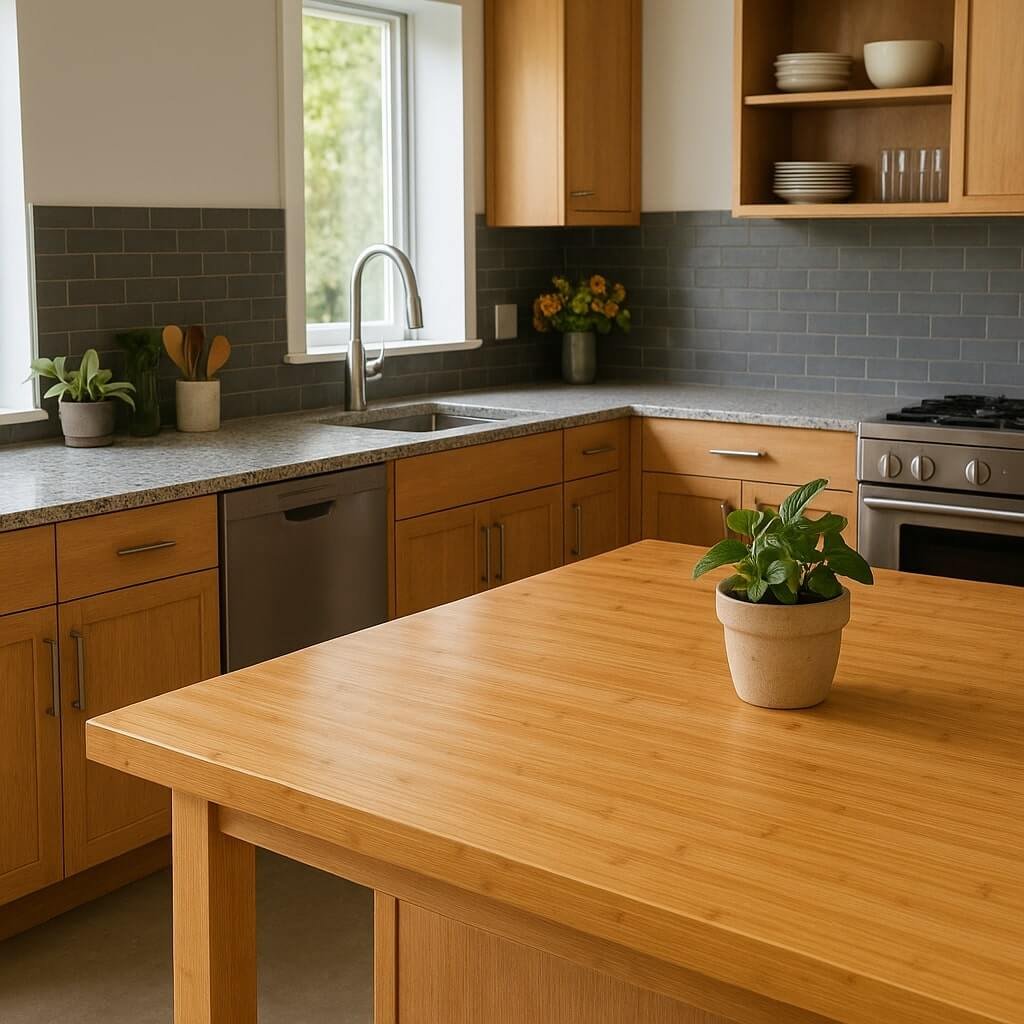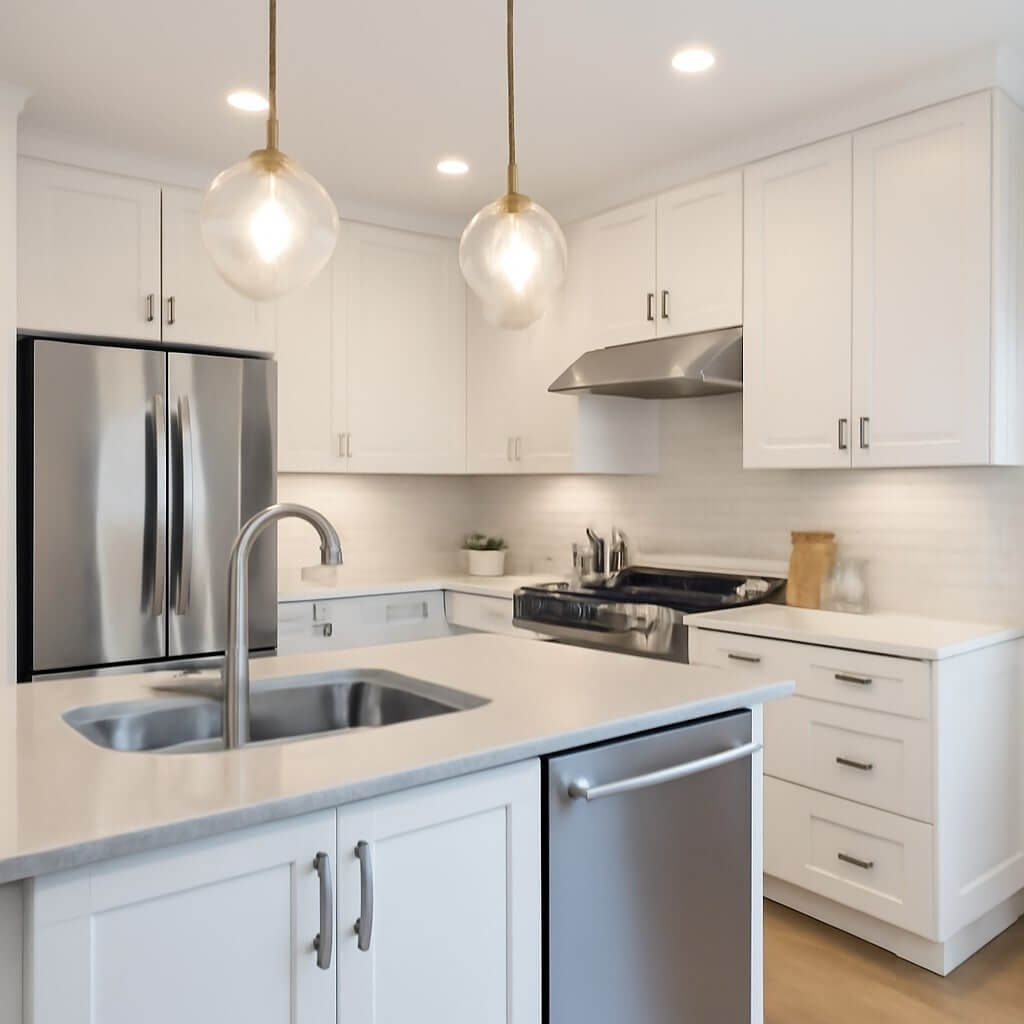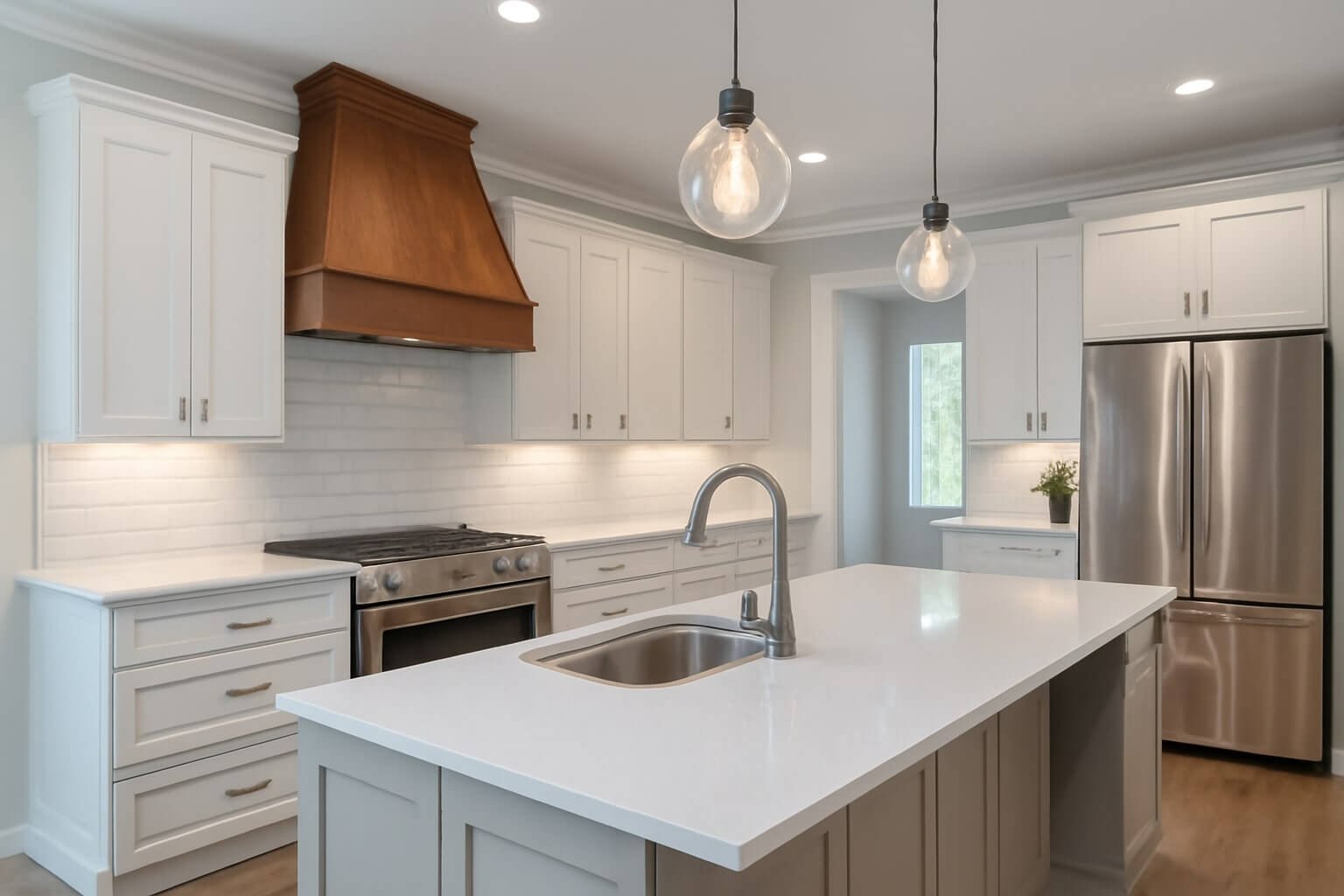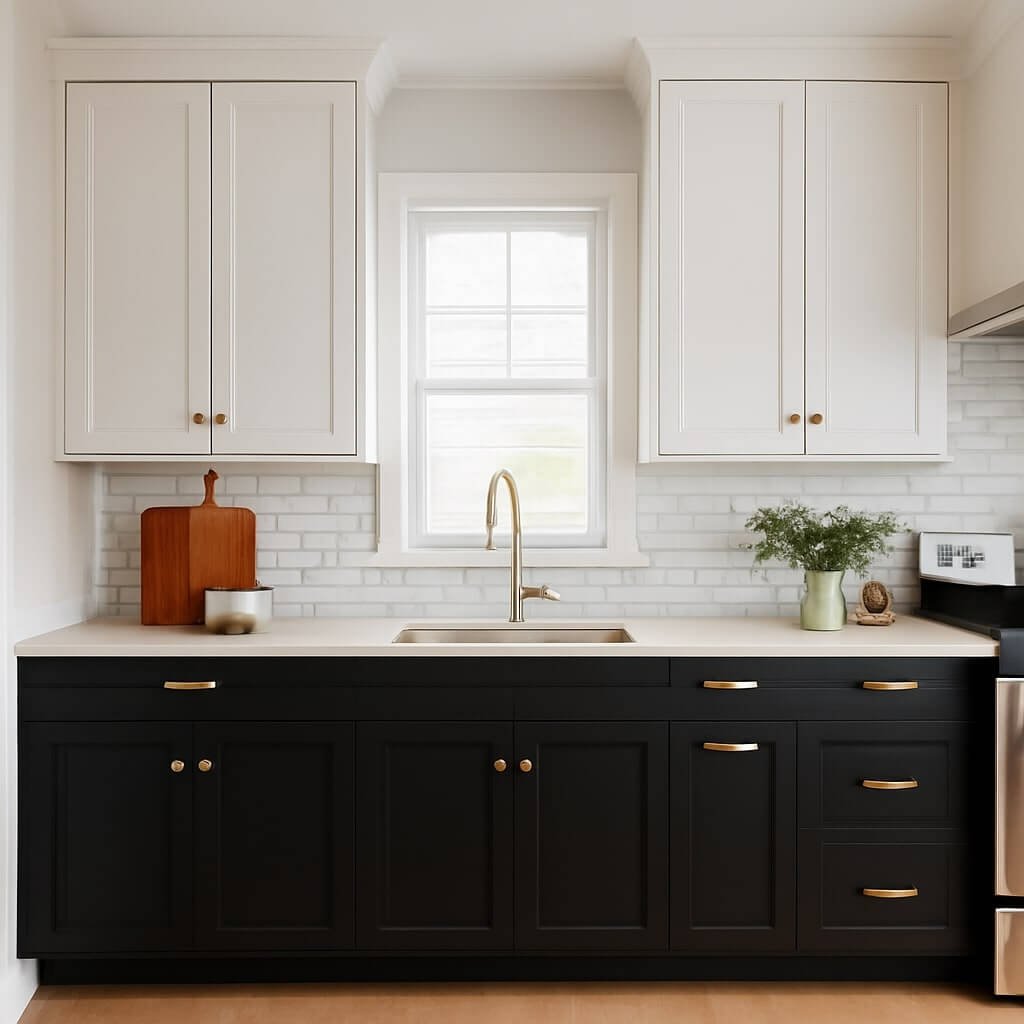When you walk into a kitchen, the surfaces often define the entire look and feel of the space. But more importantly, these surfaces also have a massive environmental impact. As sustainability becomes a household priority, eco-friendly kitchen surfaces are emerging as the stars of modern kitchen design.
Choosing environmentally responsible materials isn’t just trendy—it’s a meaningful step toward reducing your carbon footprint, improving indoor air quality, and supporting ethical manufacturing practices. Whether you’re building a new home or renovating your existing space, eco-friendly kitchen surfaces offer both beauty and peace of mind.
Why Eco-Friendly Kitchen Surfaces Matter
Environmental Impact of Traditional Surfaces
Conventional kitchen countertops and surfaces are often made from materials like granite, marble, and synthetic composites, which require significant energy to extract, process, and transport. Quarrying stone can devastate local ecosystems, while synthetic materials frequently involve petroleum-based chemicals that contribute to pollution and greenhouse gas emissions.
Health Benefits of Sustainable Materials
Besides environmental concerns, traditional surfaces may emit volatile organic compounds (VOCs) that can degrade indoor air quality and impact health. Eco-friendly kitchen surfaces, on the other hand, are typically low-VOC or VOC-free, helping create a healthier home environment for you and your family.
15 Eco-Friendly Kitchen Surfaces You’ll Adore
1. Bamboo Countertops
Bamboo grows incredibly fast—up to 3 feet in just 24 hours—which makes it one of the most renewable resources available. Bamboo countertops offer a warm, natural appearance, with strength comparable to hardwood. They are biodegradable, highly sustainable, and resistant to bacteria when sealed properly.
Pros:
- Rapid renewability
- Warm aesthetic
- Naturally antibacterial
Cons:
- Sensitive to moisture
- Requires regular sealing
2. Recycled Glass Surfaces
Recycled glass countertops combine crushed glass pieces with resin or concrete to create stunning, colorful surfaces. Each slab is unique, reflecting the vibrant colors of the recycled materials.
Pros:
- Unique appearance
- Diverts glass from landfills
- Extremely durable
Cons:
- Can be pricey
- May require specialized maintenance
3. Reclaimed Wood Countertops
Reclaimed wood gives old timber a second life, reducing the demand for new lumber and deforestation. Each slab carries a unique history, adding charm and character to your kitchen.
Pros:
- Rich history and character
- Reduces deforestation
- Durable with proper care
Cons:
- Prone to scratches and dents
- Needs regular maintenance
4. Paper Composite Surfaces
Made from recycled paper and non-petroleum-based resins, paper composite surfaces are surprisingly strong, heat-resistant, and non-porous.
Pros:
- Lightweight
- Heat and stain resistant
- Smooth, warm texture
Cons:
- Limited color options
- Requires routine care
5. Recycled Aluminum Countertops
Aluminum countertops made from post-consumer and post-industrial scrap metal provide a sleek, modern look while reusing valuable materials.
Pros:
- Recyclable
- Lightweight yet durable
- Industrial aesthetic
Cons:
- Susceptible to scratches
- Can dent under heavy impact
6. Concrete with Recycled Content
Concrete countertops can incorporate recycled materials like glass, stone, or fly ash to enhance sustainability. Modern concrete offers incredible customization for colors, textures, and embedded designs.
Pros:
- Highly customizable
- Extremely durable
- Incorporates recycled waste
Cons:
- Heavy
- Needs sealing to prevent staining
7. Butcher Block from Sustainable Sources
When sourced from responsibly managed forests, butcher block countertops offer natural beauty and a renewable alternative to synthetic options.
Pros:
- Renewable resource
- Warm, rustic look
- Easy to sand and refinish
Cons:
- Prone to scratching
- Requires sealing to resist moisture
8. Stainless Steel (Recyclable & Durable)
Often made with recycled content, stainless steel countertops are 100% recyclable and extremely durable, making them a popular choice in commercial and residential kitchens alike.
Pros:
- Long-lasting
- Resistant to heat and stains
- Fully recyclable
Cons:
- Shows fingerprints and scratches
- Industrial appearance may not suit all tastes
9. Natural Stone (Responsibly Quarried)
When responsibly sourced, natural stone like soapstone or marble can be a sustainable choice. These materials are long-lasting, minimizing the need for replacement.
Pros:
- Timeless beauty
- Extremely durable
- Long lifespan
Cons:
- Heavy
- High initial cost
10. Recycled Plastic Surfaces
Surfaces made from recycled HDPE plastics turn waste into colorful, durable countertops. They offer a playful look while keeping plastics out of landfills.
Pros:
- Diverts plastic waste
- Colorful design options
- Durable
Cons:
- Can be scratched over time
- Limited availability
11. Eco-Friendly Ceramic Tiles
Ceramic tiles made from recycled clay and glass offer endless design flexibility while using repurposed materials.
Pros:
- Highly customizable
- Heat resistant
- Easy to clean
Cons:
- Grout maintenance
- Brittle if improperly installed
12. Cork Countertops
Harvested from the bark of cork oak trees, cork regenerates naturally, making it a highly renewable material.
Pros:
- Naturally antibacterial
- Soft and warm to the touch
- Renewable and biodegradable
Cons:
- Susceptible to dents
- Sensitive to heat and moisture
13. Terrazzo Made with Recycled Materials
Terrazzo combines chips of marble, glass, or stone with resin or cement, often incorporating recycled components for a stunning, speckled appearance.
Pros:
- Unique design possibilities
- Extremely durable
- Long lifespan
Cons:
- Requires professional installation
- High upfront cost
14. Low-VOC Laminate Surfaces
Modern laminates use low-VOC adhesives and sustainable cores, offering affordable, attractive options for eco-conscious homeowners.
Pros:
- Affordable
- Wide variety of designs
- Low-VOC formulations improve air quality
Cons:
- Less durable than stone or metal
- Susceptible to moisture damage
15. Engineered Quartz with Recycled Components
Some quartz manufacturers now use recycled stone, glass, and resins to create more sustainable surfaces without compromising on beauty or durability.
Pros:
- Low maintenance
- Non-porous
- Durable
Cons:
- High cost
- Limited recyclability
Key Considerations When Choosing Eco-Friendly Surfaces
Durability and Maintenance
Longevity is crucial for sustainability. Choose materials that can withstand daily use and require minimal replacements or repairs.
Cost and Budget
Some eco-friendly surfaces may carry higher upfront costs but offer savings over time through durability and reduced maintenance.
Certifications to Look For
Look for certifications like:
- FSC (Forest Stewardship Council) for wood
- GREENGUARD for low emissions
- NSF for food safety compliance
FAQs
Are eco-friendly kitchen surfaces more expensive?
While some sustainable materials have a higher initial cost, their durability and low maintenance often offset the price over time.
How do I maintain eco-friendly countertops?
Maintenance varies by material. Many require regular sealing, gentle cleaning products, and avoiding harsh chemicals.
Are recycled glass countertops durable?
Yes, recycled glass is highly durable and resistant to heat and stains when properly sealed.
Can reclaimed wood countertops handle moisture?
With proper sealing and care, reclaimed wood can resist moisture. However, it’s more sensitive compared to stone or stainless steel.
What is the most durable, eco-friendly surface?
Stainless steel, engineered quartz, and responsibly quarried natural stone are among the most durable, eco-friendly options.
Where can I find certified eco-friendly kitchen surfaces?
Look for vendors that highlight third-party certifications like FSC, GREENGUARD, or NSF to ensure authenticity.
Conclusion: Make Your Kitchen Greener Today
Switching to eco-friendly kitchen surfaces isn’t just a design choice—it’s a lifestyle commitment to sustainability, health, and responsible consumerism. With so many beautiful and functional options available, you don’t have to sacrifice style to do your part for the planet. Make your kitchen a greener space today—and enjoy its beauty for years to come.




